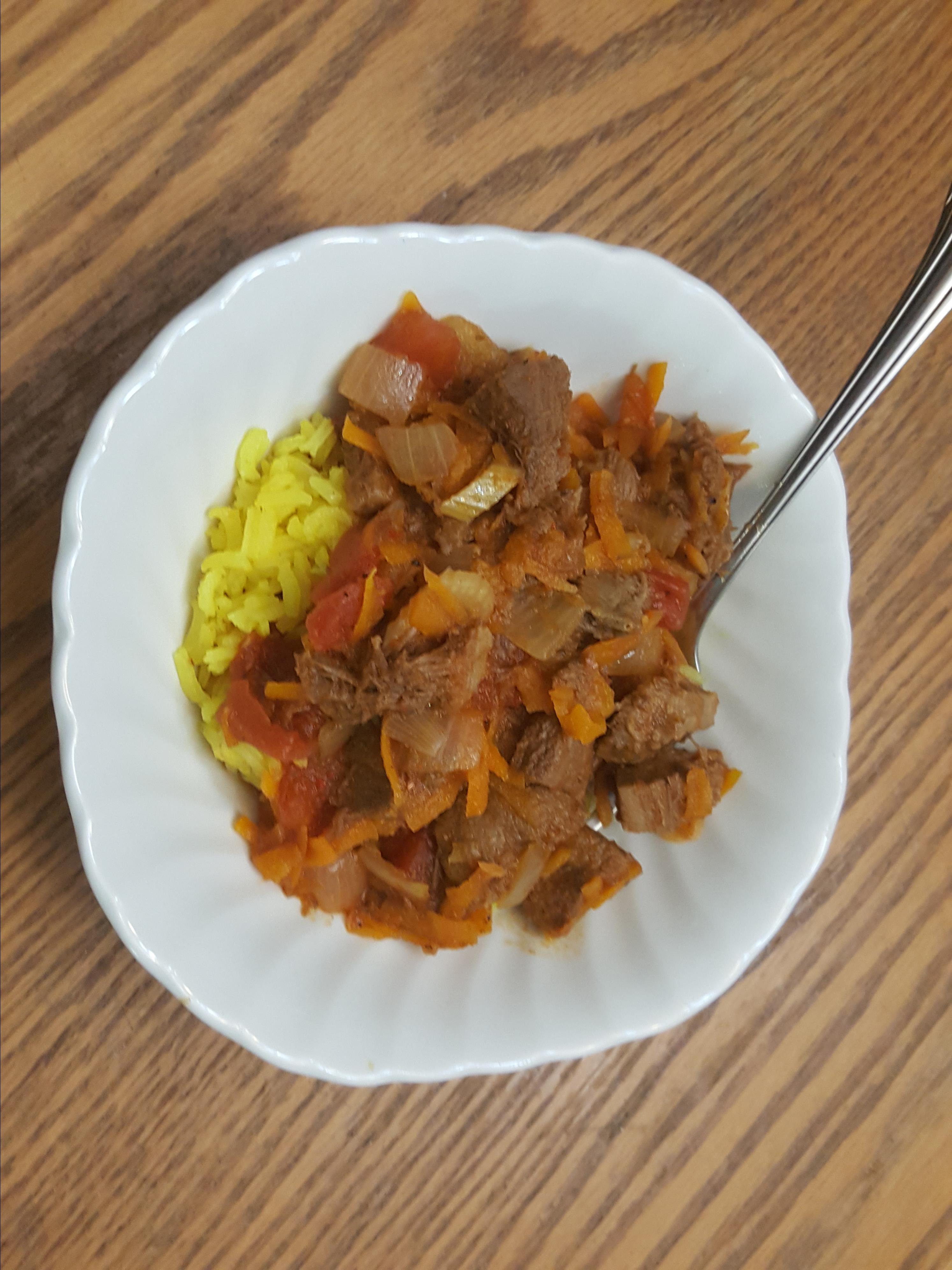Lengua (Beef Tongue) Stew

Beef tongue is combined with veggies and slowly simmered in tomato sauce and spice. Serve over rice or any other whole grain (buckwheat, quinoa, bulgur, etc.).
INGRIDIENT
DIRECTION
Step: 1
Place the beef tongue into a tight-fitting pot and cover with water by 1 inch. Add the salt and bring to a boil. Reduce heat to medium-low, cover, and simmer until the meat is tender, about 2 hours. Strain and reserve the cooking liquid. Remove and discard the skin from the tongue. Shred the meat using two forks; set aside.
Step: 2
Heat the vegetable oil in a large pot over medium-high heat. Stir in the onion, leek, celery, and carrots. Cook and stir until the vegetables soften, about 5 minutes. Stir in the tomato paste until no lumps remain and cook for 1 minute more. Add the shredded meat to the pot along with the reserved broth and
Step: 3
. Bring to a boil; reduce heat to medium-low and simmer until the vegetables are tender, 20 to 30 minutes. Season to taste with salt and pepper before serving.
NUTRITION FACT
Per Serving: 388 calories; protein 20.1g; carbohydrates 17.4g; fat 25.8g; cholesterol 124.5mg; sodium 1390.5mg.
The name of “stew” can refer to both a dish and a cooking method. Stewing involves not fast cooking piece of meat, raw fruit or beans in a tastefull liquid . It’s similar to braising, but it does have a few notable differences. The raw animal vested is chopped into smaller pieces instead of being processing menu whole , and the liquid completely covers the contents in a stew as compared to a braise’s halfway full . When meat or raw fruit are cooked using this method, the resulting dish is called stew.
Stew has a reputation for being a rib-sticking eating process that comfortable you up on a cold , winter day. It’s true ; a bowl of classic beef stew does have warming featured food , but stew’s cozy factor goes way beyond preserving you from the cold . It’s all about those tender chunks of meat and vegetables, swimming in a thick, ultra-rich gravy. The more they come together make the ultimate comfort food, no matter the weather.





